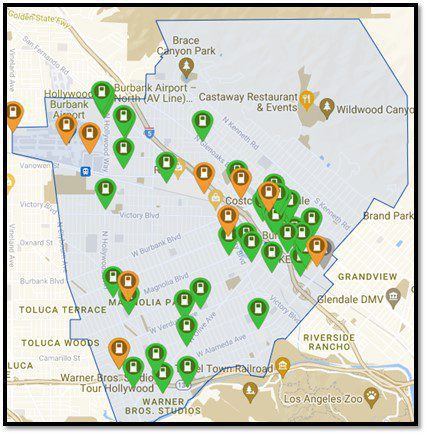Thinking of making the switch to an electric vehicle? You are not alone. About four-in-ten Americans (38%) say they’re very or somewhat likely to seriously consider an EV for their next vehicle purchase according to a recent Pew Research Center survey.
While range anxiety has been an obstacle for many people it is becoming much less of an issue. Electric vehicles and charging infrastructure have made great strides in the last five years, significantly extending range and number of charging locations.
The median range of a new EV is now about 234 miles which means plugging in every five days if your average commute is less than 40 miles round trip. If that doesn’t quell your worries, here are the top 10 cars on the market right now that can travel over 300 miles on a single charge:
- Mercedes EQS – 453 miles
- Tesla Model S – 405 miles
- Mercedes EQE – 394 miles
- BMW i7 – 388 miles
- Hyundai Ioniq 6 – 382 miles
- BMW iX – 380 miles
- Polestar 3 – 379 miles
- Tesla Model 3 – 374 miles
- Ford Mustang Mach-E – 372 miles
- Mercedes EQS SUV – 366 miles
Even if you want an electric vehicle, access to charging may seem to make owning an electric vehicle unreasonable. Fortunately, for folks that don’t have easy access to home or workplace charging, there are 228 public charging ports in Burbank and over 87,000 chargers in California. Many EVs also have a feature within the infotainment system to navigate drivers to nearby chargers when needed, and websites like plugshare.com offer interactive maps and crowd-sourced information on chargers.
Burbank Water and Power (BWP) has been working on behalf of our community to enable electric vehicle charging for almost 10 years. With state funds, BWP has installed 89 public chargers at 21 sites. These investments were done without utilizing revenue from electric rates or local tax money and provide years of benefit to our community. BWP also provides electricity to all EV chargers in Burbank, whether they are private companies or operated by BWP. This means that when you wake up or finish your workday, you can charge up in Burbank to reach your next destination.

Need another reason to purchase an EV? Learn more about incentives and rebates.
BWP has a website dedicated to electric vehicles (https://ev.burbankwaterandpower.com). There you can compare available vehicles, explore incentives, and tax credits, and locate charging stations. Below are available programs to BWP customers.

These incentives are also funded by state funds which BWP has applied for and received. In addition to the BWP incentives listed above, there are state and federal incentives. The California Clean Vehicle Project provides incentives ranging from $1,000 to $7,500, depending on income. The Federal Inflation Reduction Act provides tax credits up to $7,500 for qualified vehicles and up to $1,000 for charging equipment. Learn more at https://ev.burbankwaterandpower.com.
Drew Johnstone is the Sustainability Officer at Burbank Water and Power (BWP). BWP is a not-for-profit utility that provides safe, reliable, affordable, and sustainable electricity, which makes BWP a critical resource for the community’s transition to electric vehicles. Per Burbank City Council’s direction, BWP plays a key role in facilitating the adoption of transportation electrification through education and the development of programs and initiatives. If you have any thoughts or questions, do not hesitate to reach out to us at bwpconservation@burbankca.gov






















In a previous op/ed you said that “BWP does not use local taxes or revenue from electric sales to fund electric vehicle rebates or to install BWP EV charging infrastructure.” You added that, instead, BWP takes advantage of programs from LCSF and CalTrans. Are those programs not funded by taxpayers? Either way, one group of taxpayers is helping to pay for another group of taxpayers to purchase and charge electric vehicles. If not, then where is the money for these programs coming from?
Comments are closed.